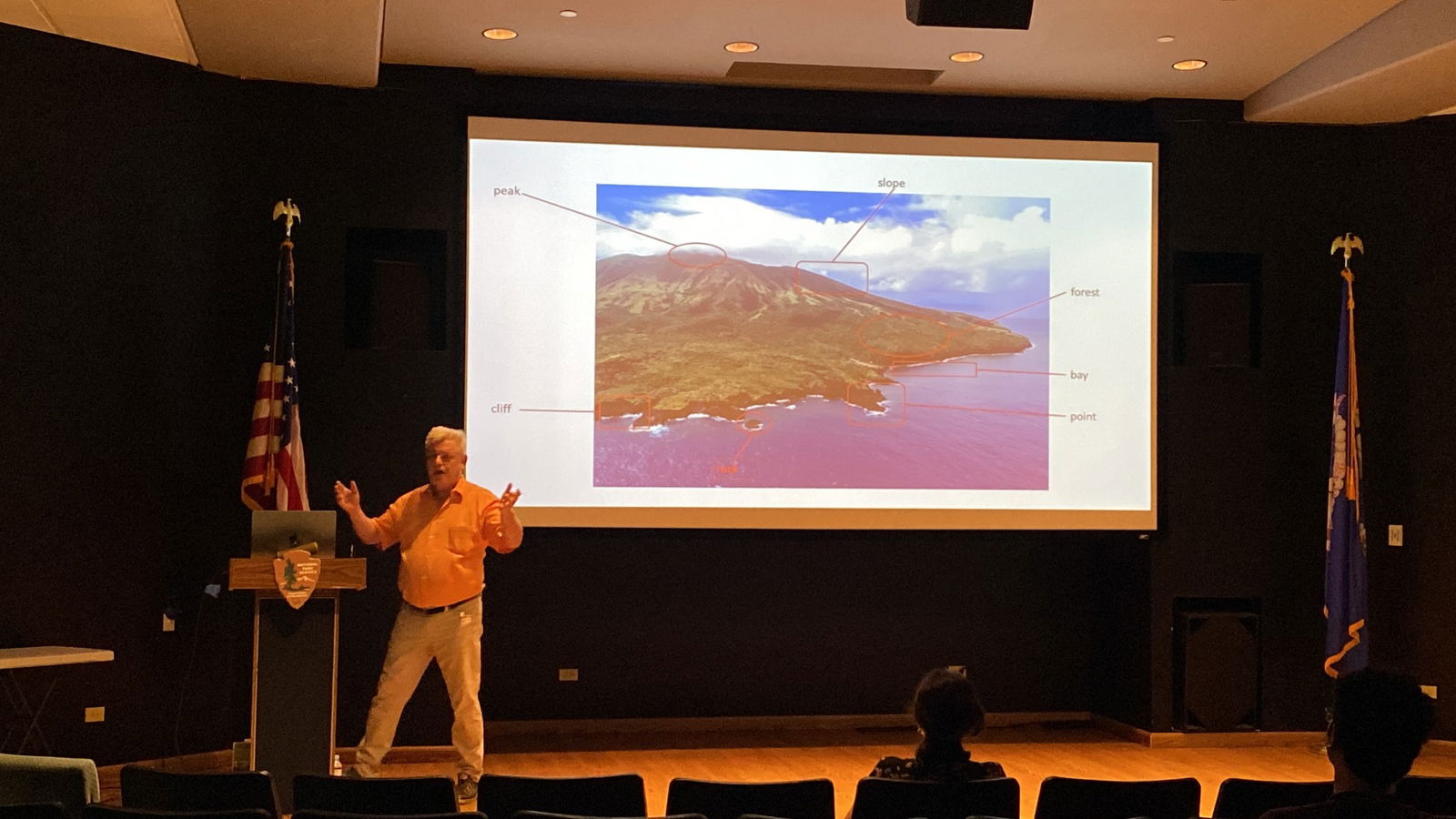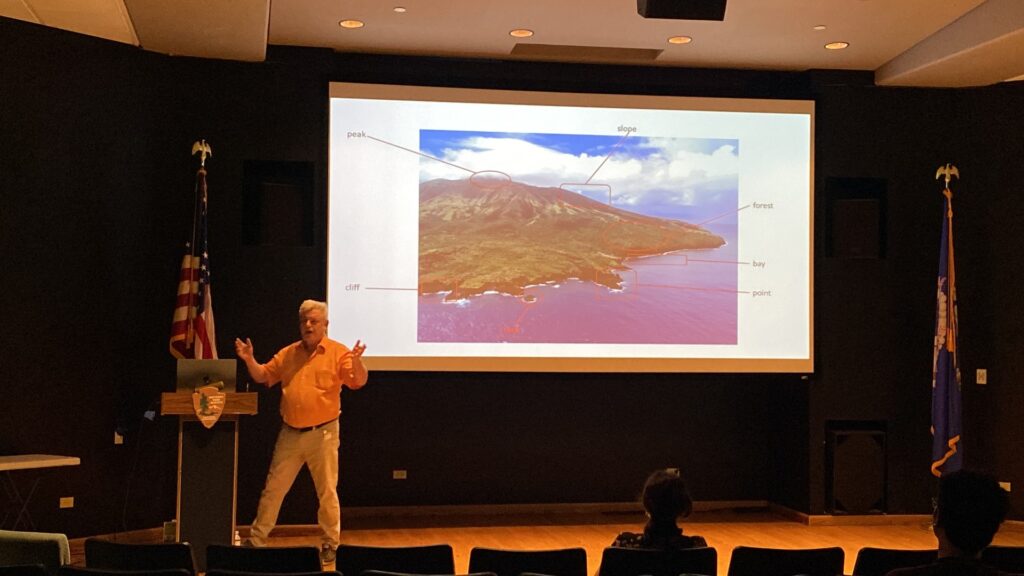
Dr. Thomas Stolz presents at the American Memorial Park theater on Tuesday, Dec. 10, 2024. Behind him is an enlarged photo of Alamagan.
AT the Northern Marianas Humanities Council’s community lecture series, Dr. Thomas Stolz said community input could lead to the rediscovery of place names missing from the maps of the Northern Islands.
Stolz was the guest speaker of the council’s latest iteration of the lecture series on Tuesday, Dec. 10 at the American Memorial Park theater.
He presented the research findings that he and Dr. Nataliya Levkovych gathered regarding the islands north of Saipan. He found it “remarkable” that there are no names for specific places in the Northern Islands.
Stolz and Levkovych are both linguists and are interested in the fields of onomastics, the study of names and their origins, and toponomastics, the study of how and why place names come to exist.
Stolz said that all over the world, humans name specific rocks, valleys, forests, points, mountains and other “geo-objects” that they come across in order to facilitate communication.
“There is an expectation of onomasticians in whatever place humans set foot — albeit for just five seconds — they tend to name the geo-objects that they found,” he said.
He said that in the Antarctic, there are places owned by Norway that are uninhabitable yet still have place names and corresponding names on maps because they were once visited by Norwegians.
In the Northern Islands, he said Alamagan “offers a plethora of geo-objects that could be named. There are cliffs, there’s a rock, a point, a bay, a forest, a slope, a peak, a mountain. Everywhere else in the world, you would find names for these objects but not on the map of Alamagan.”
He said the other Northern Islands — except Pagan — are also missing place names on the map. The official maps he referenced were created by the U.S. Defense Mapping Agency.
He said the Northern Islands are not “monotonous,” but are “diverse and characteristically structured.”
“Many geo-objects…invite being named by people who need to communicate to others where…an event took place or a given entity could be found,” he said.
He hypothesized that one reason the maps of the Northern Islands are “bare” could be “negligence on the part of the cartographers” or the withholding of information by those with knowledge of place names or those responsible for creating the maps.
He also questioned whether there was a deliberate “attempt at lying with maps” that led to the erasure of place names.
“Having the right to name places is important,” Stolz said. “Those who inscribe themselves on the map of a given territory virtually lay claim to the territory. It is thus politically of utmost importance either to give names to as many places as possible or to erase former place names coined by others from the map. Reconstructing the toponomasticon of old may help to demonstrate that the [Northern Islands] form part of the CNMI as important elements of the cultural history of the Marianas.”
Stolz said that research conducted by Scott Russell, the former executive director of the Northern Marianas Humanities Council, uncovered place names for the Northern Islands that have not appeared on a map.
In the case of Agrihan, the following names refer to places there: As Biha, As Mahalang, As Peligro, Chapanis, Goneg, Lanchon Talo, Nonag, Pahong, Quiroga, Santa Cruz and Talak Katan.
Stolz said that historic reports exist that can help them hypothesize where these places might be, but further input from former residents of Agrihan could aid in definitively determining the place names on the map.
For Anatahan, the names Arctic Ocean, Banco, Kannat Bulao, and Taberu exist, but further research is needed for corroboration.
Stolz noted that there are numerous places named “Songsong” and “Partido” in the Northern Islands.
He said he and Levkovych can help research and preserve place names in the Northern Islands.
“Given that we are facing remembered but still unregistered place names, we fear that an important component of the cultural heritage of the Marianas is in danger of falling into oblivion,” he said. “To safeguard the knowledge of the former inhabitants of the [Northern Islands] to the benefit of the future generations, an effort should be made to recover the presumably rich stock of place names and document them in the format of an annotated and culturally well-informed atlas.”
Stolz said they hope former inhabitants will share their memories “because without their support [an] atlas [for the Northern Islands] will not be feasible in the first place.”











